Generative AI is a type of artificial intelligence designed to create new content such as text, images, music, or even code. Unlike traditional AI, which focuses on analyzing data or making predictions, generative AI produces original outputs based on patterns it has learned. It gained popularity in the 2010s with advancements like Generative Adversarial Networks (GANs) and transformer models such as GPT. These breakthroughs allowed AI to move beyond processing information to actually generating human-like content, making it useful across various fields like education, design, and communication.
Main Goal of Generative AI Explained
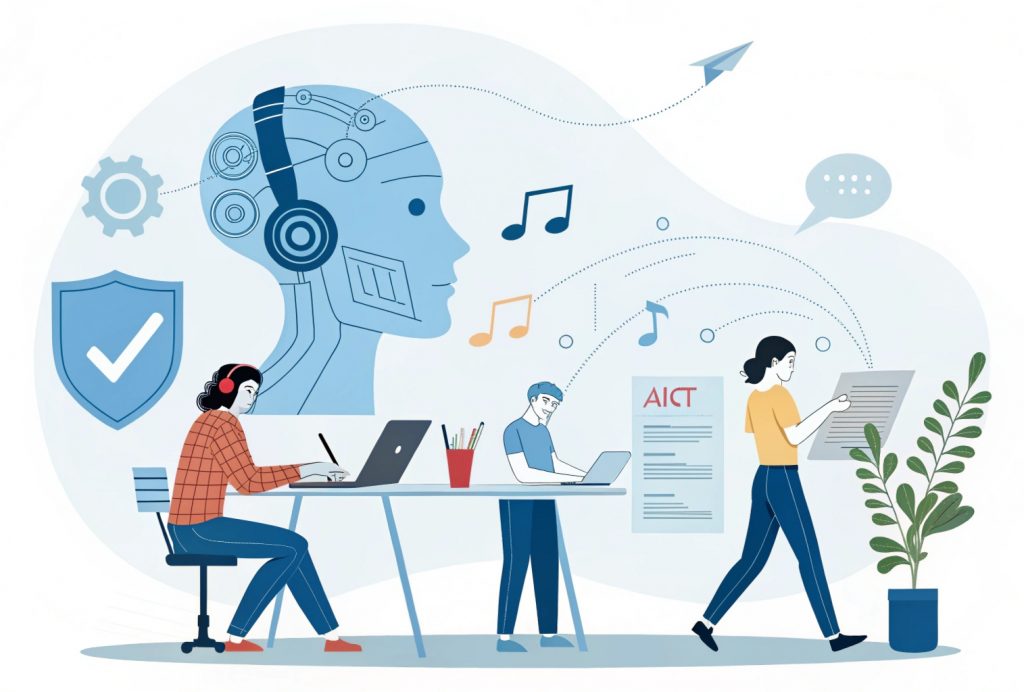
- Creating New Content
The main purpose of generative AI is to create new content—like articles, images, music, or code—that didn’t exist before. It does this by learning from massive datasets and then using that knowledge to generate similar but original outputs. For example, ChatGPT is trained on a huge amount of text and uses that training to write human-like responses. Behind the scenes, it uses a special kind of deep learning model called a transformer, which predicts the next word, pixel, or note based on what came before. - Enhancing Creativity and Automation
Generative AI helps people come up with new ideas, write faster, design more efficiently, or even produce music or videos—all with just a few inputs. It automates the repetitive parts while keeping the creative process fun and engaging. This is possible because the AI learns patterns, styles, and structures from the data it was trained on and applies them in a smart way. - Democratizing Content Creation
One big goal of generative AI is to make high-quality content creation accessible to everyone—not just professionals. Tools like AI writing assistants, art generators, and no-code platforms allow users to create impressive content without needing deep technical skills. This is all powered by pre-trained AI models that do the heavy lifting in the background. - Supporting Ethical and Personalized Outputs
Generative AI also aims to create content that is safe, fair, and useful for different users. With built-in safeguards and filters, AI systems are improving in reducing bias and harmful content. Plus, they can personalize outputs based on user input—like writing styles, tone, or preferences—making the results feel more tailored and human.
Key Technologies Powering Generative AI
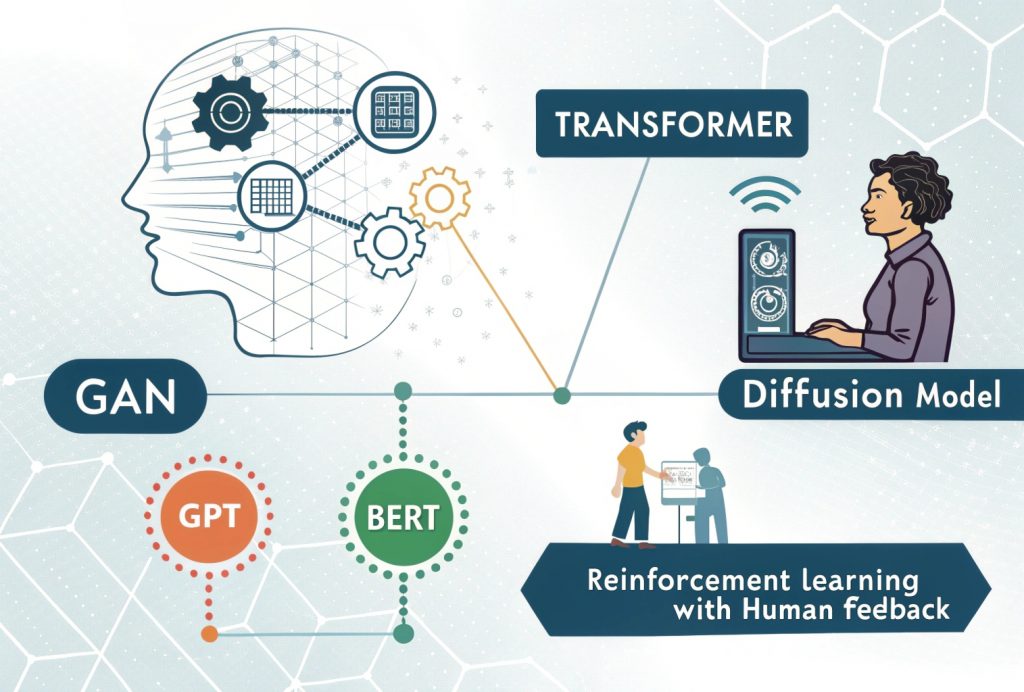
- Generative Adversarial Networks (GANs)
GANs are made up of two AI models that work like a creative competition. One model tries to create something (like a realistic image), while the other tries to spot if it’s fake or real. Over time, the first model gets better at making content that looks real. GANs are commonly used for generating images and deepfakes. - Transformer Models (like GPT, BERT)
Transformers are the foundation of modern generative AI tools like ChatGPT. They read and understand huge amounts of text, then use that knowledge to generate human-like language. GPT (Generative Pre-trained Transformer) is great at writing and conversation, while BERT is more focused on understanding context and meaning. - Diffusion Models (e.g., Stable Diffusion)
These models create images by starting with random noise and slowly turning it into a clear picture. It’s like watching a blurry image come into focus step by step. Tools like Stable Diffusion and DALL·E use this method to generate stunning visuals from text prompts.
Reinforcement Learning with Human Feedback (RLHF)
This is a technique where AI learns by trial and error—but with a human guiding it. After generating content, the AI receives feedback from humans to improve its responses. This method helps fine-tune models like ChatGPT to give safer, more helpful, and more accurate answers.
Explore our online programs to become future-ready
Transform your career with industry-aligned courses designed by experts.
Top Applications of Generative AI
| Application Area | Description |
|---|---|
| Text Generation | AI writes articles, emails, essays, and answers. Chatbots like ChatGPT help with writing and support. |
| Image Synthesis and Editing | Tools like DALL·E generate images from text prompts or edit existing photos creatively. |
| Music and Video Generation | AI composes music or creates videos based on text input, useful for content creators and marketers. |
| Code Generation and Software Help | AI tools like GitHub Copilot generate code, suggest improvements, or fix bugs with simple instructions. |
| Gaming and Virtual Worlds | AI creates game characters, storylines, and 3D environments, making game development faster and richer. |
Industry Use Cases & Adoption
| Industry | How Generative AI Is Used |
|---|---|
| Education | Creates personalized learning materials, quizzes, summaries, and explanations for students. |
| Healthcare | Helps in drug discovery, generating synthetic medical data, and supporting diagnostics. |
| Marketing & Advertising | Designs ad copy, banners, social posts, and even full campaigns using AI-generated content. |
| Finance | Generates synthetic financial data for model training and helps detect fraud patterns. |
| E-commerce & Retail | Creates product images, auto-generates descriptions, and offers virtual try-ons for shoppers. |
Positive Impact of Generative AI
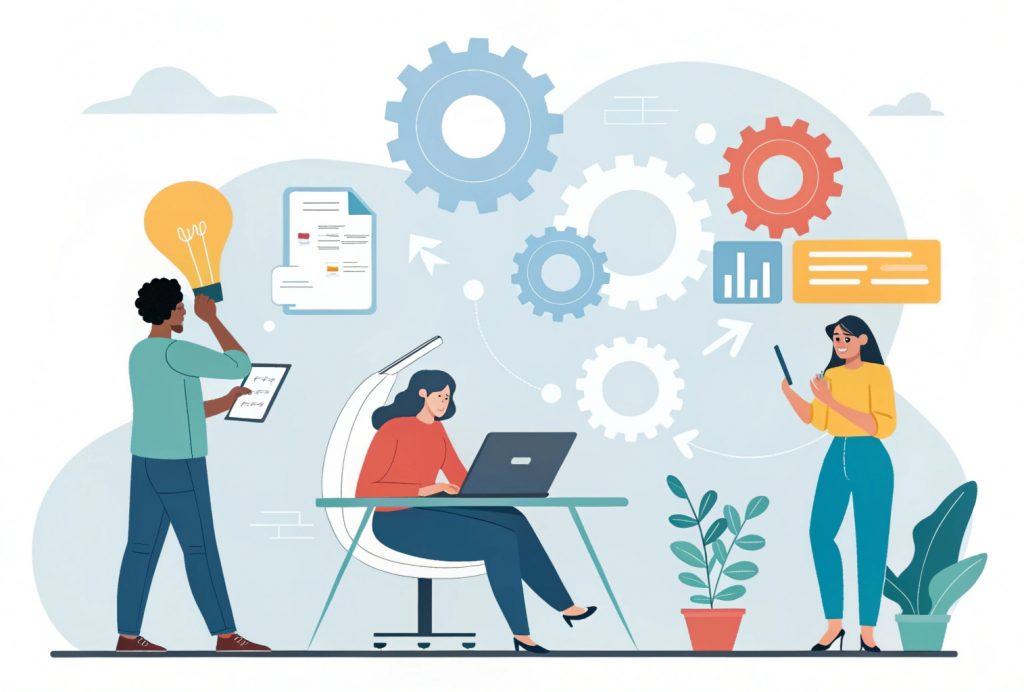
Generative AI is helping people become more productive and creative. Whether it’s writing, designing, or coding, AI tools make it faster and easier to get work done and come up with new ideas.
It also helps in reducing operational costs. By automating repetitive tasks like customer support, content creation, or data entry, businesses can save both time and money.
Another major benefit is accelerated innovation. Generative AI allows teams to test ideas quickly, build prototypes faster, and explore creative possibilities that were previously time-consuming.
Finally, it’s empowering individuals and small businesses. Now, anyone can create professional-level content or tools without needing expert skills or large budgets—just by using simple AI platforms.
Challenges & Ethical Concerns
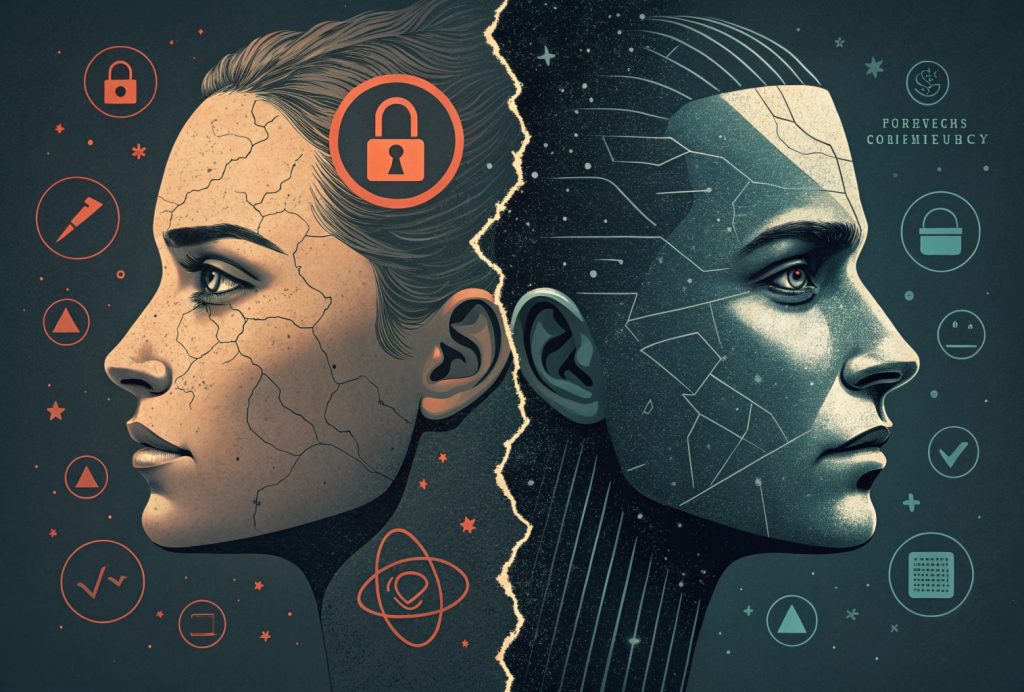
Despite its many benefits, generative AI comes with some serious challenges and ethical concerns.
One major issue is the rise of deepfakes and misinformation. AI can create fake videos, photos, or news that look very real, making it harder for people to know what’s true and what’s not.
There are also copyright and originality problems. Since AI is trained on existing content, it may accidentally copy or recreate someone else’s work without permission.
Another concern is bias and discrimination. If the AI is trained on biased data, it might produce unfair or harmful results—like offensive content or stereotypes.
Lastly, there’s the risk of data privacy and misuse. If personal or sensitive data is used to train AI without consent, it can lead to privacy violations or misuse of information.
Future of Generative AI
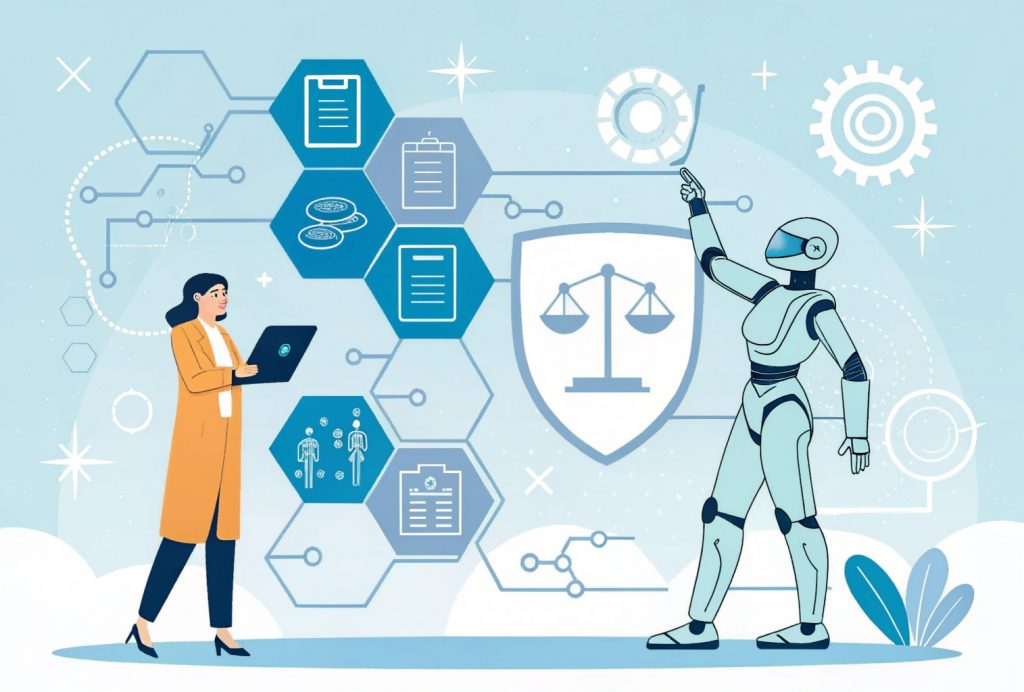
The future of generative AI looks promising, especially in the area of human-AI collaboration. Instead of replacing people, AI will work alongside humans to boost creativity, speed up tasks, and offer smart suggestions—making work more efficient and enjoyable.
AI regulation and governance will also become more important. As AI tools grow more powerful, governments and companies will need to set clear rules to ensure responsible and fair use, preventing harm or misuse.
We’ll also see a rise in low-code and no-code generative tools. These tools will allow everyday users—without technical skills—to build apps, generate content, or create designs using simple drag-and-drop features or natural language commands.
Lastly, generative AI will increasingly integrate with other emerging technologies like AR (Augmented Reality), VR (Virtual Reality), and IoT (Internet of Things). This means smarter homes, immersive virtual experiences, and more interactive digital environments powered by AI.
Conclusion
Generative AI is more than just a trending technology—it’s a powerful tool that’s reshaping how we create, work, and interact with digital content. From writing and design to healthcare and education, it is opening new doors for innovation and making advanced tools accessible to everyone.
While its main goal is to generate original content, its true value lies in enhancing human creativity, saving time, and driving progress across industries. At the same time, it’s important to stay aware of the ethical concerns and use these tools responsibly.
As the technology continues to evolve, combining generative AI with human insight and clear regulations will be key to building a future where AI supports, empowers, and inspires us all.

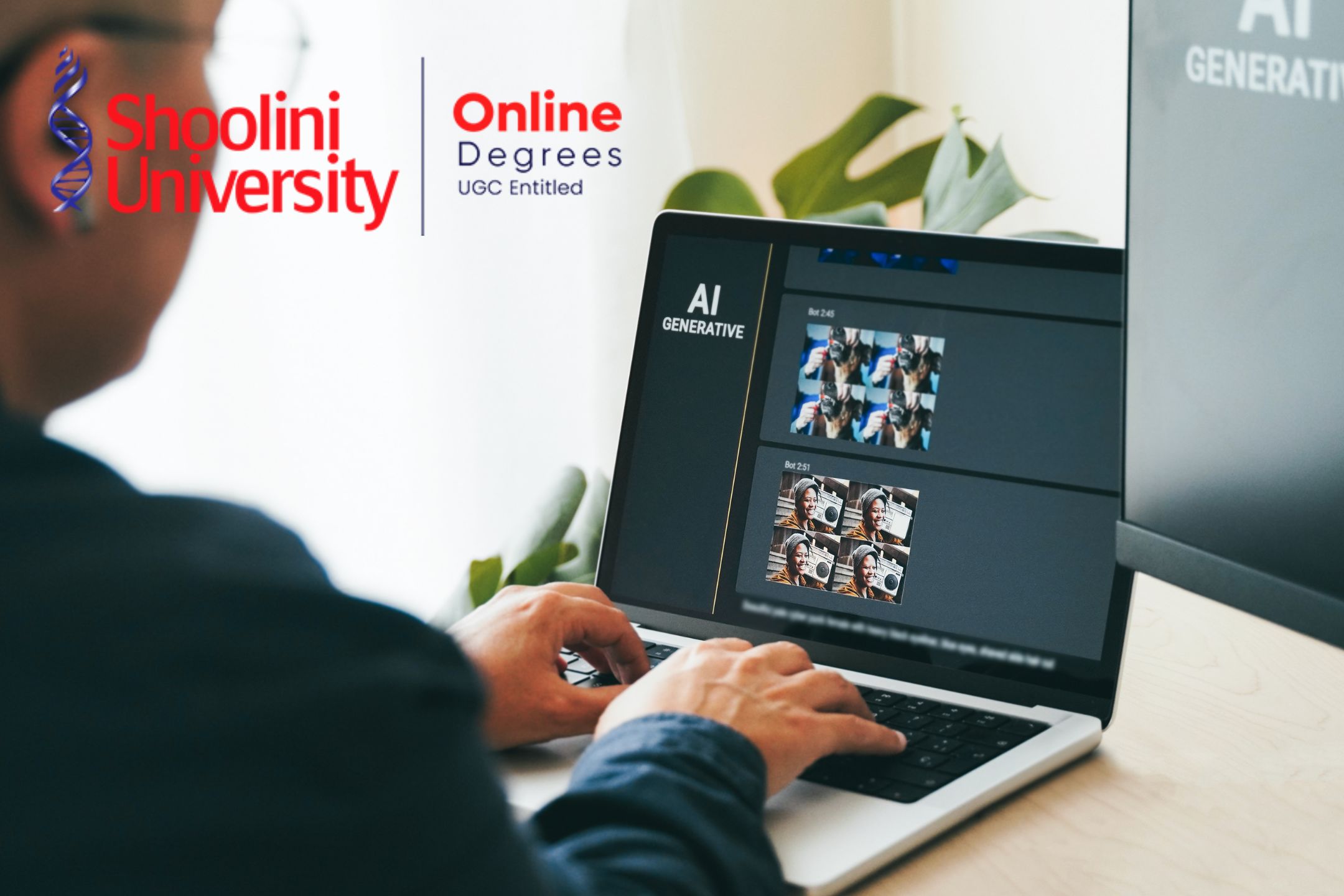
Leave a Reply